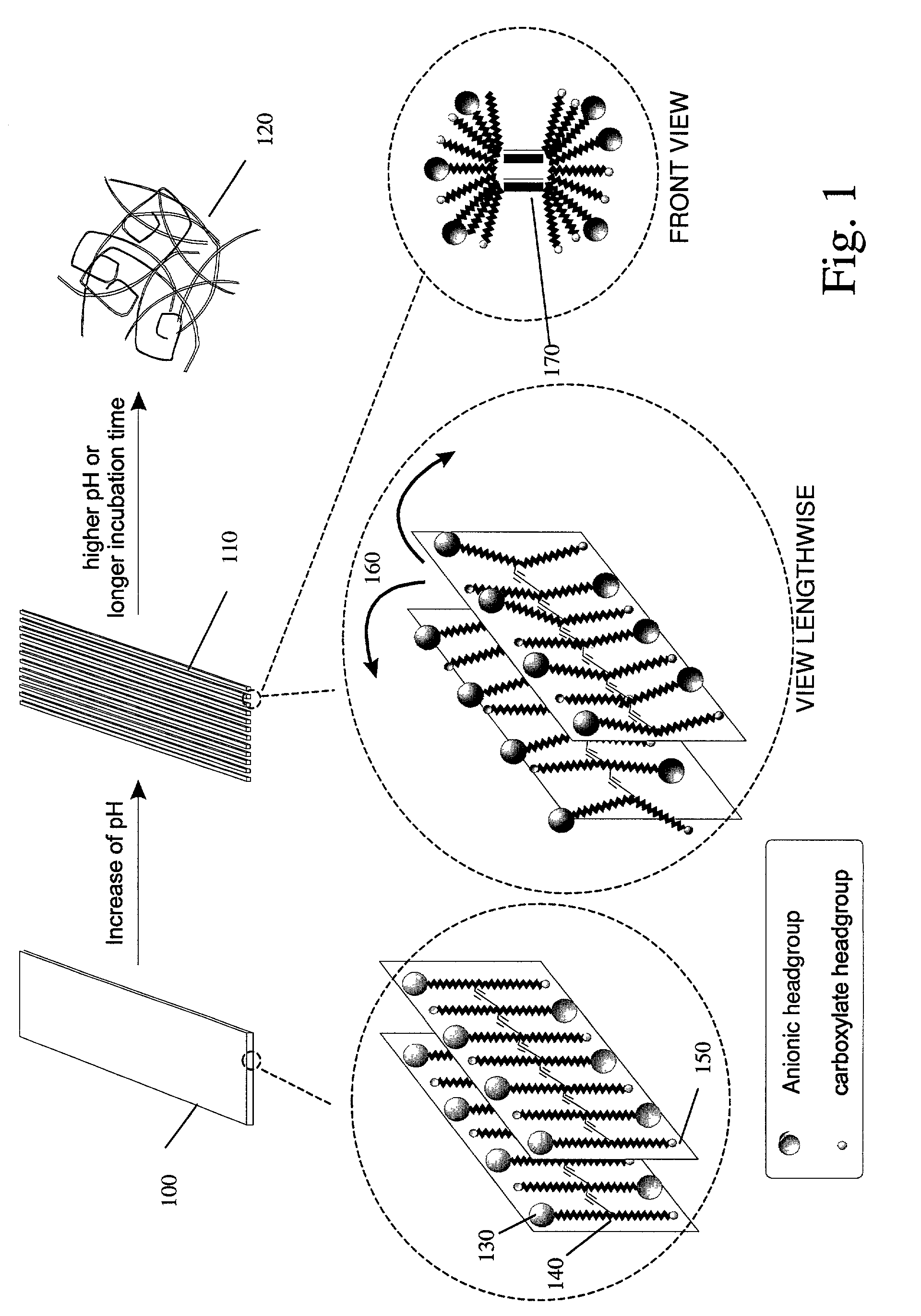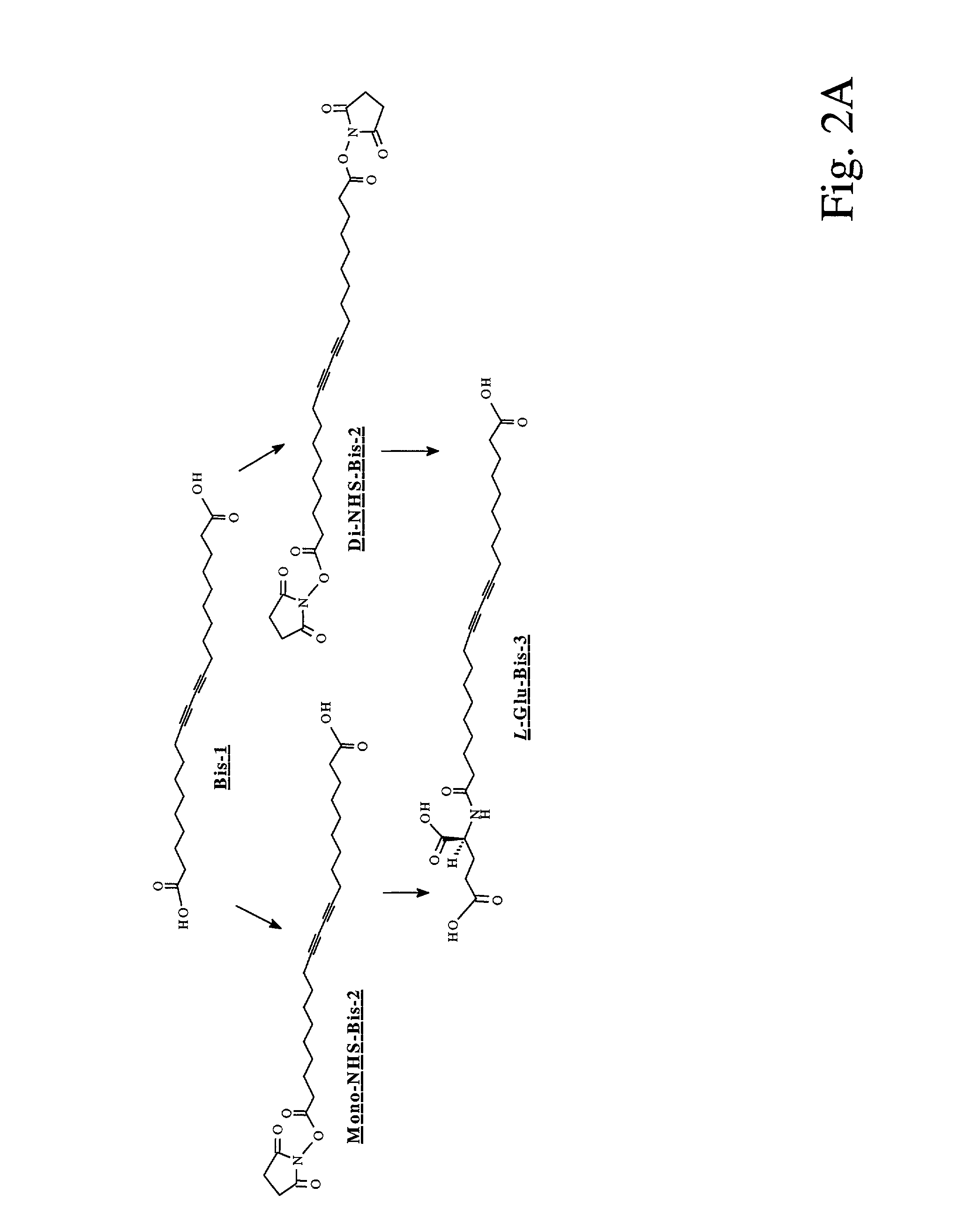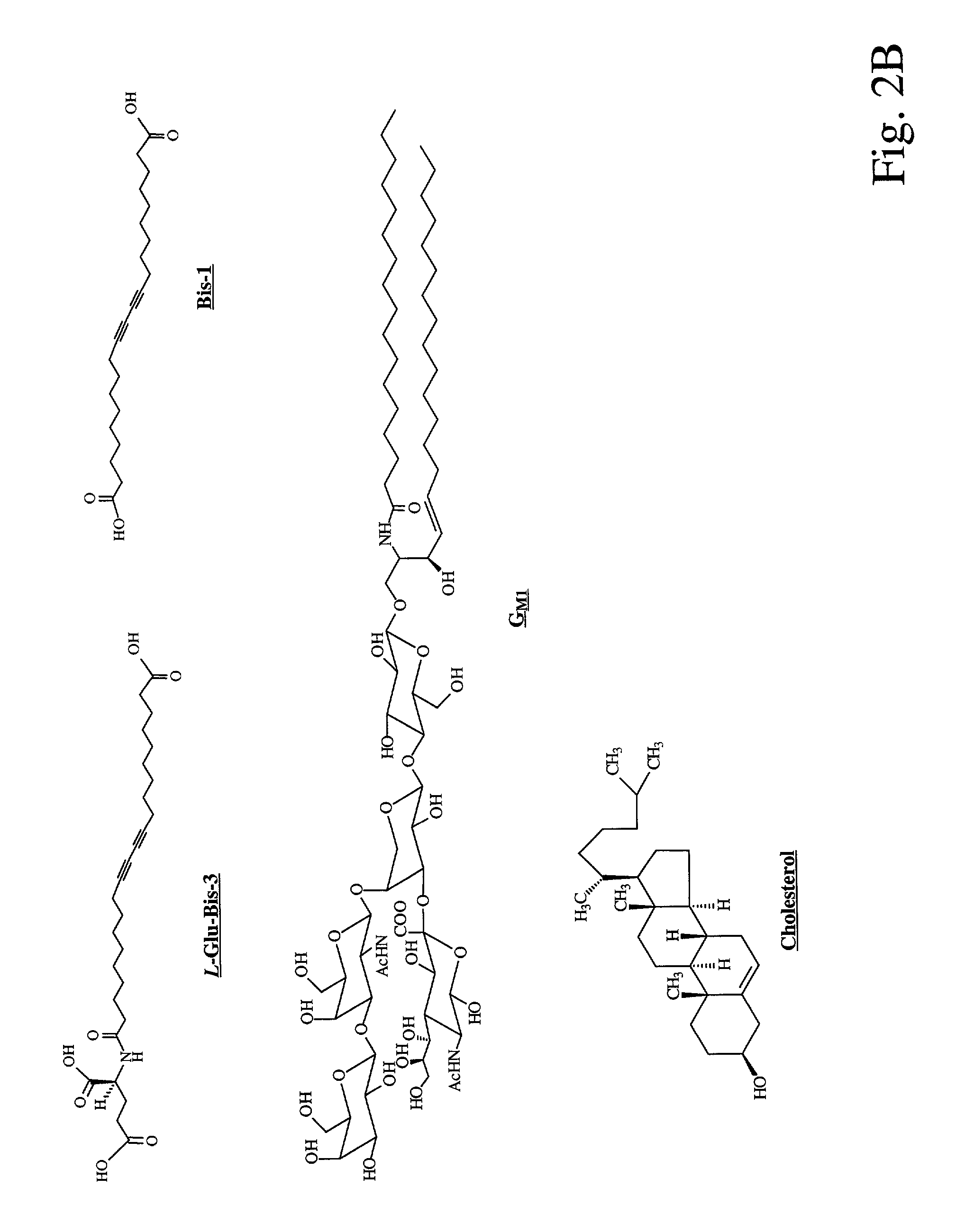Color and shape changing polymeric ribbons and sheets
a polymer ribbon and color-changing technology, applied in the field of biomimetic or lipid-based self-assembling molecular materials and color-changing biosensing micro-devices, can solve the problems of limited stability, limited stability, and difficulty in rational design of well-defined functional materials and quickly accessing highly ordered assemblies, so as to facilitate the rational design of effective nanomaterials, using bolaamphiphilic lipids, the effect of improving the effect of nanomaterials
- Summary
- Abstract
- Description
- Claims
- Application Information
AI Technical Summary
Problems solved by technology
Method used
Image
Examples
example 1
Synthesis of Bolaamphiphilic Lipids
[0103]10,12-Docosadiynedioic acid (Bis-1) was obtained in 95% purity from Lancaster, and was further purified by dissolving it in tetrahydrofuran (THF) and passing it through a short silica pad prior to use to remove blue polymerized impurities. Anhydrous THF used in the lipid activation step was purchased from Aldrich. Water used in the preparation of various buffer solutions was purified with Millipore Milli-Q system. Other chemicals were reagent grade and used without further purification.
[0104]For doped bolaamphiphilic lipid assemblies, 10,12-Docosadiynedioic acid (Bis-1) was obtained in 95% purity from Lancaster (Windham, N.H.), and was further purified by dissolving in tetrahydrofuran (THF) with passage through a short silica pad to remove polymerized impurities. Lipid L-Glu-Bis-3 was synthesized by coupling L-glutamic acid with one end of Bis-1 through an amide linkage. Cholesterol (5-cholesten-3-β-ol) was purchased from Sigma (St. Louis, Mo...
example 2
Synthesis of Bolaamphiphilic Lipids
[0105]A robust supramolecular assembly requires strong association between assembling units by different forms of intermolecular forces. The classical amphiphilic lipid assembly can be made more rigid via non-covalent approaches such as increasing van der waals interaction via π-π stacking at the lipophilic portion and electrostatic interaction via H-bonding at the hydrophilic portion. The assembly can also be strengthened via covalent modifications such as surface crosslinking, coating, and internal polymerization. See Fendler, J. H. Science 1984, 223, 888–894; Ringsdorf, H. et al., Angew. Chem. Int. Ed. Engl. 1988, 27, 113–158; Srisiri, W. et al., J. Am. Chem. Soc. 1997, 119, 4866–4873.
[0106]Here, we designed an L-glutamic acid derivatized wedge-shaped bolaamphiphilic diacetylene lipid L-Glu-Bis-3 (FIG. 2B) as the self-assembling unit of a highly organized molecular architecture. In our design, L-Glutamic acid was attached to one end of a diacety...
example 3
Preparation of the Supramolecular Assembly and its Polymerization
[0111]Supramolecular Assembly Preparation. The self-assembling of matrix lipid L-Glu-Bis-3 occurred rapidly under mild conditions. Instead of probe sonication and subsequent low temperature incubation that are commonly used for mono-functional lipids, 2 min of vortexing and 10–20 min room temperature incubation was sufficient to ensure the formation of stable supramolecular assembly in aqueous solution for L-Glu-Bis-3. UV-irradiation of the assembled material resulted in rapid polymerization of L-Glu-Bis-3 (within seconds), giving the material a dark blue appearance. The rapid polymerization indicates a highly ordered assembly and the good alignment of diacetylene units. Dynamic light scattering (DSL) indicated that the size of the microstructures was on the scale of microns. Consistent with this, filtration of the polymerized blue assembly through a 1 μm membrane yielded a colorless filtrate that showed no absorption ...
PUM
| Property | Measurement | Unit |
|---|---|---|
| pH | aaaaa | aaaaa |
| pH | aaaaa | aaaaa |
| length | aaaaa | aaaaa |
Abstract
Description
Claims
Application Information
 Login to View More
Login to View More - R&D
- Intellectual Property
- Life Sciences
- Materials
- Tech Scout
- Unparalleled Data Quality
- Higher Quality Content
- 60% Fewer Hallucinations
Browse by: Latest US Patents, China's latest patents, Technical Efficacy Thesaurus, Application Domain, Technology Topic, Popular Technical Reports.
© 2025 PatSnap. All rights reserved.Legal|Privacy policy|Modern Slavery Act Transparency Statement|Sitemap|About US| Contact US: help@patsnap.com



